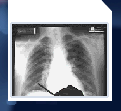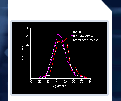|
|
 |
 |
 |
 |
 |
 |
 |
 |
 |
 |
 |
 |
|
Scientific articles |
 |
|
|
A complete and optimal hematocrit adaptation is only achieved at around 40 days for a subject going from sea level to 3510 m in La Paz. The time in days required to achieve full adaptation to any altitude, ascending from sea level, can be calculated by multiplying the adaptation factor of 11.4 times the altitude in km. Descending from high altitude in La Paz to sea level in Copenhagen, the hematocrit response is a linear fall over 18 to 23 days. Altitude adaptation through hematocrit changes. JOURNAL OF PHYSIOLOGY AND PHARMACOLOGY 2007, 58, Suppl 5, 811818
|
|
|
In order to make any sea level dive table usable during high altitude diving, a new conversion factor is created. We introduce the Standardized Equivalent Sea Depth (SESD), which allows conversion of the Actual Lake Diving Depth (ALDD) to an equivalent sea dive depth. Paulev PE, Zubieta-Calleja G. High altitude diving depths. Res Sports Med. 2007 Jul-Sep;15(3):213-23. )PMID: 17987509 The original publication can be found here http://dx.doi.org/10.1080/1543862070152679
|
|
|
The fundamental paper by Prof. Dr. Gustavo Zubieta-Castillo where he states that man is prepared to tolerate the hypoxic levels of the summit of Mt. Everest and carry out a normal life. Adaptation to life at the altitude of the summit of Everest.Fiziol Zh. 2003;49(3):110-7. (ISSN 0201-8489)
|
|
|
Chronic Mountain Sickness is a condition in which the hematocrit is increased above the normal level in residents at high altitude.... CMS is once again shown to be an adaptation of the blood oxygen transport system to a deficient organs' function due to diverse disease processes; the adaptation aimed at sustaining normoxia at the cellular level in the hypoxic environment at high altitude.
JOURNAL OF PHYSIOLOGY AND PHARMACOLOGY 2006, 57, Supp 4, 431-442
|
|
|
One can infer that hypoventilation at rest is an energy saving mechanism of the pneumo-dynamic and the hemo-dynamic pumps.....
JOURNAL OF PHYSIOLOGY AND PHARMACOLOGY 2006, 57, Supp 4, 425-430
|
|
|
New concepts on Chronic Mountain Sickness
as Published in
ACTA ANDINA Vol V, #1, 1996
|
|
|
Two of the typical diving profiles, described by Batle, have been
submitted to calculations with a modified Haldane model: a perfusion
limited, symmetrical multitissue/multilevel model. The model predicts
that the two dive profiles will lead to DCS as recorded. A third profile,
confirmed by reports to avoid DCS, also were accurately predicted. An alternative range of tables is developed Thorsen HC, Zubieta-Calleja G, Paulev PE. Decompression sickness following seawater hunting using underwater scooters. Res Sports Med. 2007 Jul-Sep;15(3):225-39.
PMID: 17987510
|
|
|
The following excerpts are from the E-mail discussion of the committee on chronic mountain sickness, prior to The 3rd World Congress on Mountain Medicine and High Altitude Physiology and The 18th Japanese Symposium on Mountain Medicine carried out in Matsumoto, Japan (May 20th - 24th, 1998).
|
|
|
A review of the history and development of the Acid-Base status of blood with novell high altitude correction charts.
JOURNAL OF PHYSIOLOGY AND PHARMACOLOGY 2005, 56, Supp 4, 155-170
|
|
|
Pulse oximetry during breath-holding in normal residents at high altiude shows a typical pattern.....
JOURNAL OF PHYSIOLOGY AND PHARMACOLOGY 2005, 56, Supp 4, 251-256
|
|
|
Increased polycythemia: An Ally or foe in the conquest of Mt. Everest.
Bernardo Guarachi, the first Bolivian to ascend Mt. Everest had polycythemia and this possed many questions analyzed in this article that was published in the International Society for Mountain Medicine Newsletter
|
|
|
The triple hypoxia syndrome is the addition of three hypoxias: 1) First hypoxia: high altitude, 2) Second hypoxia: CMS or lund disease hypoxia and 3) Third hypoxa: Acute superimposed lund disease such as the flu or pneumonia.
ACTA ANDINA Vol V, #1, 1996
|
|
|
A glass chamber with a plastic covered wooden floor (2.75 m long, 1.45 m wide and 2.0 m high) was constructed in our laboratory in June 1992 (3510 m; barometric pressure = 494 mmHg), in which subjects can be comfortable for many hours while breathing different oxygen mixtures simulating different altitudes within the range of the earth's atmosphere
|
|
|
HAPE patients frequently have ulcers on the tongue.The tongue appears white with one or more reddish colored ulcers that have rough irregular borders. It is non painful, and without bleeding.
|
|
|
Due to the bowl shaped topography of La Paz, the residents of the city are constantly changing altitude from around 3100 meters in a common residential area to around 4100 m at El Alto, an upper city industrial and airport area.
Acta Andina; 5:1 pg 19-21 (1996).
|
|
|
increased polycythemia in CMS, affect more men than women and the severity is in relation to age, magnitude of the pulmonary lesions and particularly to altitude, in such a way that a moderate increased polycythemia will be more severe or grave at higher altitude, exponentially as barometric pressure decreases."PROGRESS IN MOUNTAIN MEDICINE AND HIGH ALTITUDE PHYSIOLOGY", May 20th-24th 1998. Matsumoto, Japan.
HidekiOhno, Toshio Kobayashi, shigeru Masuyama & Michiro Nakashima (Editors)
|
|
|
With the advent of pulse oximetry, oxygen saturation measurements have been simplified. However, at high altitude, large fluctuations from breath to breath have been observed.
(Abstract) Acta Andina; 5:1 pg 19-21 (1996).
|
|
|
Acute high altitude hypoventilation that resulted in hyperventilation following hyperoxic tests.some people with acute mountain sickness, have low ventilation (hypoventilate), and hence low partial oxygen tension in the arterial blood (PaO2), on arrival to 3600 m. Here we present two cases that have some variation of symptoms but have in common hypoventilation and in which we performed basic pulmonary testing including hyperoxia.
|
|
|
One concept of providing treatment for CMS patients is to permanently destroy their RBCs. However, the effect of phenylhydrazine usage is toxic for the bone marrow, the liver and other tissues, changing the color of the skin from cyanotic to yellow, with jaundice.
ACTA ANDINA, Vol 4, #2, 1995
|
|
|
In association between the High Altitude Pathology Institute and the Club Andino Boliviano, we have built a green reflective glass and a red iron structure pyramid in Chacaltaya at 5200 m.
|
|
|
Measurement of circulatory time using pulse oxiemtry during breath holding in chronic hypoxia.
Breath holding and pulse oximentry as a diagnostic tool at high altitude.
A(bstracts)4th world congress on mountain medicine and high altitude physiology.
|
|
|
 |
 |
 |
 |
 |
 |
 |
 |
 |
 |
 |
 |
|
|
 |
 |
 |
 |
 |
 |
 |
 |
 |
 |
 |
 |
|
Other publications |
 |
|
|
Relativity applied to hyperventilation at high altitude
It is well known that the shortfall of PIO2 due to an ascent to high altitude is compensated by hyperventilation that brings about hypocapnia and respiratory alkalosis.
If a subject hyperventilates on ascent to high altitude why is the PaO2 low?
|
|
|
Bolivia and particularly La Paz, has been shocked these days by a
determination of the South American Football Confederation, who
by suggestion of the International Association of Football
(FIFA), has decided that the World Cup Football playoffs cannot
be carried out on Stadiums above 3000 m. of altitude,
specifically in the city of La Paz.
International Society for Mountain Medicine Volume 6, Number 1, Winter 1996.
|
|
|
This photo is back in 1998
|
|
|
A specialist in High Altitude Medicine & Physiology as well as Internal Medicine, Dr. Zubieta is the President of the High Altitude Pathology Institute, in La Paz. A graduate of the Universidad Mayor de San Andres School of Medicine in Bolivia, Dr. Zubieta received additional training at the National Institutes of Health in the USA.
|
|
|
National Geographic Mazagine (April 1987)
|
|
|
See the report by the BBC regarding the historic soccer game played on the summit of Mt Sajama 6542 m. where we proved that sports played at high altitude pose no risk to health, provided they are scintifically controlled.
|
|
|
 |
 |
 |
 |
 |
 |
 |
 |
 |
 |
 |
 |
|
|
|


























